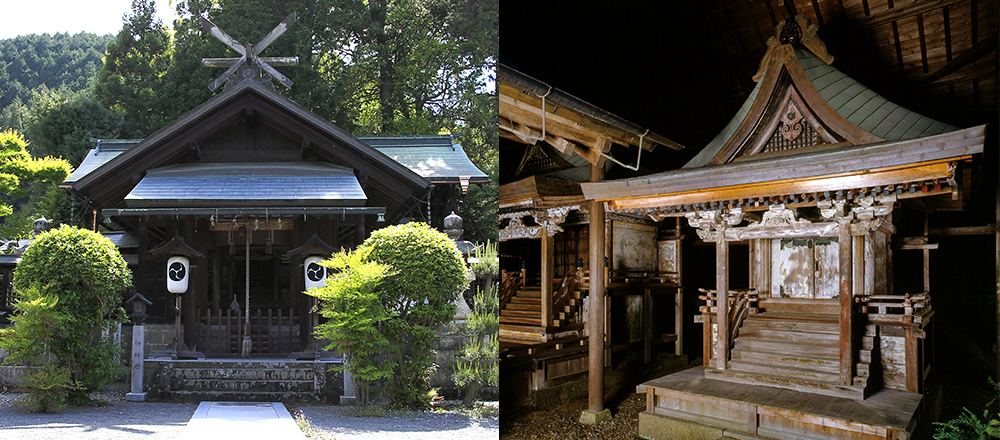Inner shrine of Miyuki Jinja Shrine, a sessha (auxiliary shrine) of Hibashiri Jinja Shrine
This is a sessha (auxiliary shrine) of the soja (a shrine enshrining several gods) of Hinenosho’s Iriyamada Village, its main building, constructed in the late Muromachi Period (1336–1573), remains in use to this day.

Listed in the Engi-Shiki Jinmyocho (a list of the names of shrines that existed during the Engi Era), this shrine was also called Takimiya Shrine (Taki Daimyojin Shrine) and served as the representative shrine for the four villages of Iriyamada. The Masamoto-ko Tabihikitsuke states that Takimiya Shrine was used to offer elegant Buddhist incantations for the Bon Festival of the Dead at the height of summer and for events to rejoice at rain, rites and festivals, sarugaku (the precursor of kyogen farces in Noh theater) and dengaku (ritual rice planting music and dancing), as well as murahyojo (yoriai, village council meetings) and yukisho (testimony by boiling water, which was regarded as God’s judgment). Its torii (entrance gate) currently stands along a prefectural road (Kokawa Kaido), and lying behind the grounds, through which flows the Oi watercourse, the most important watercourse in Ogi, is a mountain called “Miyayama.”
The inner shrine of Hibashiri Jinja Shrine is located in the center of the worship hall and has two sessha (auxiliary shrines), Kasuga Jinja Shrine and Miyuki Jinja Shrine, on its left and right sides, respectively. Based on ink-penned records from 1508 found inside Miyuki Jinja Shrine, as well as the sculptural styles of kibana (architrave), kaerumata (curved wooden support on top of the main beam) and other engravings, the auxiliary shrines are believed to have been built in the Muromachi period (1336-1573). The shrine has been designated as a National Important Cultural Property, and its inner shrine, which is estimated to have been constructed in 1622 based on the inscription on the giboshu (ornament cap) on pillars, has also been designated as a Tangible Cultural Property by Izumisano City. A kettle dated 1847 with the inscription “Iriyamada-no-sho” and a painting titled “Painting of Ogi Village” have been passed down in Hibashiri Jinja Shrine. The grounds also have a stone lantern dated 1648 with the inscription “Senshu Hineno-gun Iriyamada-no-sho.”
The shrine is also mentioned in archives of the early modern period. A list of shrines and temples for Izumi Province dated 1843 indicates the existence of Ryuonji Temple and many sessha, while “Ogi Tsuchimaru Ujigami” is shown in the Painting of Ogi Village. The building of Ryuonji Temple remained until the postwar years of the Showa period (1926-1989) and was used as an elementary school.
The shrine still has groups of parishioners in Ogi (Kami-ogi, Naka-ogi and Shimo-ogi). Ninai danjiri of Ogi continue to be carried into the shrine’s grounds, and the ritual event of hotaki (a festival to burn bonfires, also called ofutaki or oshitaki) is also organized each November.






